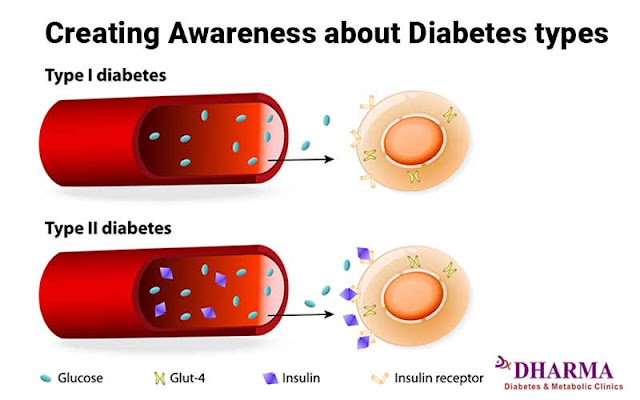Creating Awareness About Diabetes Types
Type 2 diabetes is the most commonly occurring diabetic condition and could be diagnosed at any age. Obviously, diabetes has sown its roots deep in the Indian society and the number is expected to reach a whopping 98 million by 2030. Almost every house in India have at least one patient suffering from diabetes and though this fact needs to be checked, the stressful lifestyle has never put a stop on the rising number of diabetic cases.
What an individual Thinks when Diabetes comes to his mind. In India, the person feels he will be restricted on his sugar consumption and will be put on medication which he or she has to consume throughout their lifetime. Patients in India are mostly less educated and are not aware that this chronic disease may give birth to many more new diseases. So, Let’s get an understanding of diabetes and their types.
Types of diabetes
Diabetes is mainly of three types which can be either Type 1, Type 2 diabetes and in certain conditions, it could be a gestational diabetic condition.
Type 1 diabetes
Type 1 diabetes is an autoimmune condition wherein the body attacks its own pancreas with antibodies leading to the destruction of Beta cells in the pancreas. This ultimately stops the production of the insulin a hormone which is responsible for maintaining the blood sugar level in the body. So when your body is out of insulin production your will be considered a Type 1 diabetic patient. Some of the symptoms which can be observed with type one diabetes include damage of tiny blood vessels in eyes also termed as diabetic retinopathy, diabetic neuropathy, diabetic nephropathy and you might be easily attacked by heart-related disease or stroke.
Treatment suggested for Type 1 diabetes
Generally, type one diabetes occurs in the early childhood phase and involves a painful episode of injections in the skin so that it gets absorbed by the fatty tissues lying below. There is a different method of injecting which could be either by syringes, insulin pens that are prefilled and fine needle, jet injectors that use high-pressure air to send a spray of insulin and even insulin pumps which can dispense insulin through the skin.
Some periodic test suggested Type 1 diabetes
Some of the tests suggested for any type 1 diabetic patient includes the A1C blood test so that the estimated blood glucose level for the last three months could be analyzed. So if you are suffering from Type 1 diabetes there are some significant lifestyle changes which one must adapt. This includes a frequent test of blood sugar levels, careful meal planning, exercising on daily basis and taking insulin and other medication as needed.
Type 2 diabetes
It’s a fact that type two diabetes accounts for more than 95 % of cases in adults. If we see the history of type 2 diabetes it earlier used to start once the person had crossed the 40 years mark in his or her life. But with changing lifestyle which includes his work and eating culture, it ‘s now more prevalent in society and is on a rising toll.
Type 2 diabetes is also termed as non-insulin dependent diabetes. Type 2 diabetes can also cause major health complications which can be related to kidneys, nerves and eyes. The type 2 diabetes also increases the risk of heart-related disease and stroke.
Gestational diabetes
Diabetes which is triggered by pregnancy is also called gestational diabetes and is often recognized during the middle or latter half of pregnancy. In the case of gestational diabetes, a higher amount of blood sugar level is transmitted through the placenta into the baby.
As per NIH reports almost to 2% to 10% of pregnancies has been identified with gestational diabetes and gets resolved post pregnancy. But there are several cases wherein the mother also comes under the risk umbrella of developing Type 2 diabetes.
The baby which is unborn has a greater risk and risk includes abnormal weight gain before birth, breathing problems, abnormal weight gain and risk of developing diabetes later in life. Because of abnormal weight gain, there are many instances wherein the mother has to go for cesarean baby is more than the usual size.
With gestational diabetes, risks to the unborn baby are even greater than risks to the mother. Risks to the baby include abnormal weight gain before birth, breathing problems at birth, and higher obesity and diabetes risk later in life. Risks to the mother include needing a cesarean section due to an overly large baby, as well as damage to the heart, kidney, nerves, and eye.
Conclusion:
Knowing Types of diabetes is helpful as now the epidemic has entered our lifestyle and taking strict precaution in your eating habits and lifestyle can keep you away of such chronic condition so just take care & enjoy a healthy life.
Content Source: https://www.dharmadiabetesclinics.com/blog/creating-awareness-about-diabetes-types/




Comments
Post a Comment